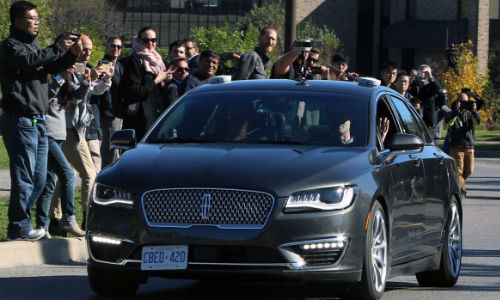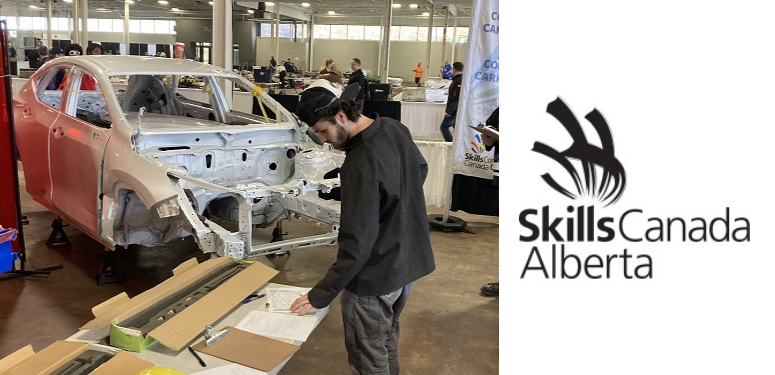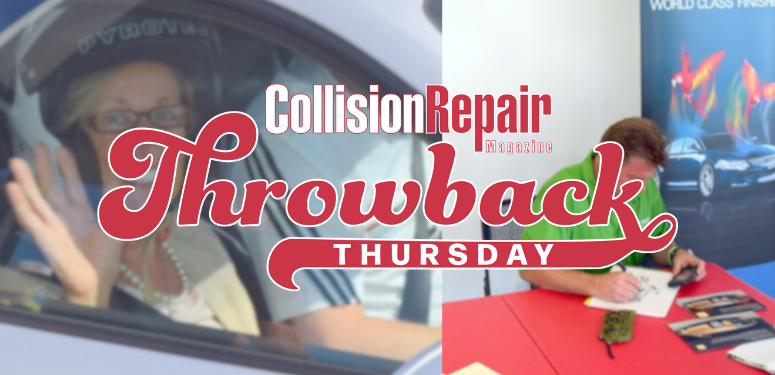By Jeff Sanford
Toronto, Ontario — October 15, 2017 — In this week’s Autonomous Report, a BlackBerry QNX autonomous vehicles (AV) takes to the road in Ottawa, Google’s new self-driving public relations campaign, the tremendous energy costs of autonomous driving and much, much more!
– The biggest news in the AV sector in Canada this week was the widely reported inaugural ride of a BlackBerry QNX-equipped self-driving car in Ottawa. The trip was billed as the first on-street test of an autonomous vehicle in Canada. An AV was tested around the University of Toronto recently, by the way, so there may be a challenge to that claim.
BlackBerry’s QNX division is considered a bright spot in that company. It already manufactures key parts of the digital systems of modern cars. The AV market is going to be a big part of that company’s business plan in the years to come. In this case, the company kitted out a grey Lincoln MKZ that pulled away from the curb with Ottawa Mayor Jim Watson, councillor Marianne Wilkinson and John Wall, General Manager of BlackBerry QNX, as a way of kicking off the company’s on-road testing program.
“Today is the first public fruits of what we’ve been doing,” said Wall, according to a report by the Canadian Press.
Although the street was closed to the public, according to the report the, “… demonstration attracted scores of people.” Once testing is fully underway the AVs will be operating on city streets amidst real traffic and pedestrians. As well, “To aid in the demonstration, the test loop around the suburban technology park has been upgraded with traffic lights equipped with transmitters that communicate with the car as well as repainted street lines and new LED street lights,” according to the story.
BlackBerry QNX will focus on designing software for AVs, while other companies will work on creating hardware. According to Wall, “In a lot of cases, the OEMs want to own that, so the Fords of this world, the Mercedes of this world, that’s their secret sauce, they’re going to build the brain. We’re going to provide all the infrastructure, the security, the safety, the redundancy, the communication, how the signals come in.”
The government has already dedicated a demonstration test zone for Stratford, Ontario, which is part of the Ontario government’s plan to create an, “Autonomous Vehicle Innovation Network, with the help of $80 million over five years … Canadian auto parts firm Magna International Inc. announced earlier this week that it would join BMW and Intel Corp. to develop a self-driving system for the global vehicle marketplace by 2021,” according to the report.
– Google and Intel seem to have launched some kind of public relations campaign to tout the safety of self-driving cars. Intel has run ads featuring Lebron James getting over his apprehension about riding in a self-driving car and Google released a report on safety features. The document outlines the way its cars work and the safety systems built into the vehicles.
According to the report, “All of our self-driving vehicles are equipped with a secondary computer that can take over in the event of a main computer failure, bringing the vehicle to a safe stop (i.e. a minimal risk condition). Our sensors and software scan constantly for objects around the vehicle—pedestrians, cyclists, vehicles, road work, obstructions—and continuously read traffic controls, from traffic light color and railroad crossing gates to temporary stop signs. Our vehicles can see up to 300 metres away (nearly three football fields) in every direction.”
The company was also sure to note that it has designed these cars with hackers in mind. Many, many stories have appeared in the media that fret about the possibility of a hack attack at the wheel. Clearly Google is trying to allay many different fears by laying out how it is these cars are built: “…safety-critical aspects … are isolated from outside communication. For example, both the safety-critical computing that determines vehicle movements and the onboard 3D maps are shielded from, and inaccessible from, the vehicle’s wireless connections and systems.”
The document notes that, “… our engineers also conduct crash avoidance testing across a variety of scenarios … Waymo has completed thousands of crash avoidance tests at our private test track. Each of these individual tests recreates a distinct driving scenario and allows us to analyze our vehicles’ response. We then use our simulator to test these scenarios further and improve our overall software capabilities.”
Google relied on data from NHTSA showing the distribution of the most common pre-crash scenarios. “For example, just four crash categories accounted for 84 percent of all crashes: rear end crashes, vehicles turning or crossing at an intersection, vehicles running off the edge of the road, and vehicles changing lanes. Therefore, avoiding or mitigating those kinds of crashes is an important goal for our testing program.” These cars have LiDAR, sensors, cameras and radar systems. There is also an, “… audio detection system that can hear police and emergency vehicle sirens up to hundreds of feet away, and GPS to supplement our vehicles’ extensive understanding of their physical locations in the world.”
– The Guardian ran an extensive article on autonomous trucking recently, and talked to Ryan Petersen, the founder Flexport, a freight logistics company, who thinks that, “… fully operational self-driving trucks will start replacing jobs within the next year, and will probably become commonplace within 10.” According to Petersen, the savings will be too great for the company not to do this. “Labour accounts for 75 percent of the cost of transporting shipments by truck, so adopters can begin to realize those savings. Beyond that, while truckers are prohibited from driving more than 11 hours per day without taking an eight-hour break, a driverless truck can drive for the entire day. This effectively doubles the output of the trucking network at a quarter of the cost. That’s an eight-times increase in productivity, without taking into account other benefits gained by automation,” he said.
– Many have assumed that AVs will also be electric. Others, however, predict AVs will have to be gasoline-electric hybrids, as the draw on the electrical system from AV tech will be so great. According to a report on Bloomberg, “Self-driving technology is a huge power drain. Some of today’s prototypes for fully autonomous systems consume two to four kilowatts of electricity — the equivalent of having 50 to 100 laptops continuously running in the trunk … In an industry where the number of LEDs in a brake light are scrutinized for their impact on gas mileage, processing data from laser, radar and camera sensors will be an enormous challenge.” The story goes on to note that, “… suppliers will have to find creative new ways to offset emissions produced by feeding the car’s increasingly intelligent brain.” Scott Gallett, Vice President of Marketing at BorgWarner, is quoted as saying, “We’ve been battling all the time because the governments are always pushing for a few percent improvement every year. This just amplifies that challenge.”
The report notes that “autonomous features on a Level 4 or 5 vehicle, which can operate without human intervention, devour so much power that it makes meeting fuel economy and carbon emissions targets 5 percent to 10 percent harder, according to Chris Thomas, BorgWarner’s Chief Technology Officer.”





































